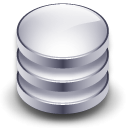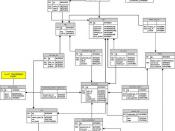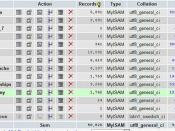Database:The word "Database" is often used to refer to any data available for information processing or retrieval operations. It implies a particular structuring of the data. The database is a mechanized, formally defined, centrally controlled collection of data in an organization.
Database Management System (DBMS):A Database Management System which is known as DBMS, is a software system that performs the functions of defining, creating, revising, and controlled the database. It provides facilities for retrieving data, generating reports, revising data definitions, updating data, and building applications. All applications can access the data; all users of the data the same information with the same quality and recency. The Database Management System manages the creation and use of databases. The Database Management System controls the interaction between the database and application programs prepared by programmer and between the database non-programming users.
Database Administration (DBA):The DBA is an organizational authority to manage DBMS. The DBA uses special instructions and facilities of the DBMS to define, create, redefine, and restructure the database and to implement integrity controls.
The data integrity achieved by having data in the database controlled through the database administration function and data creation, access, and updating controlled by the database management software.
Main Components of DBMS:There are four major components of DBMS and those are given briefly below:I.Data Definition Language (DDL): The data definition language (DDL) is used to define the structure of a database. They are typically includes the following:1.Defining all data elements to be included in the database.
2.Defining all organization of the data elements into records, tables, etc.
3.Defining a name, field length, and field type for each data element. A field name is used to refer to the corresponding data element while accessing it.
4. Defining controls for fields that can...


